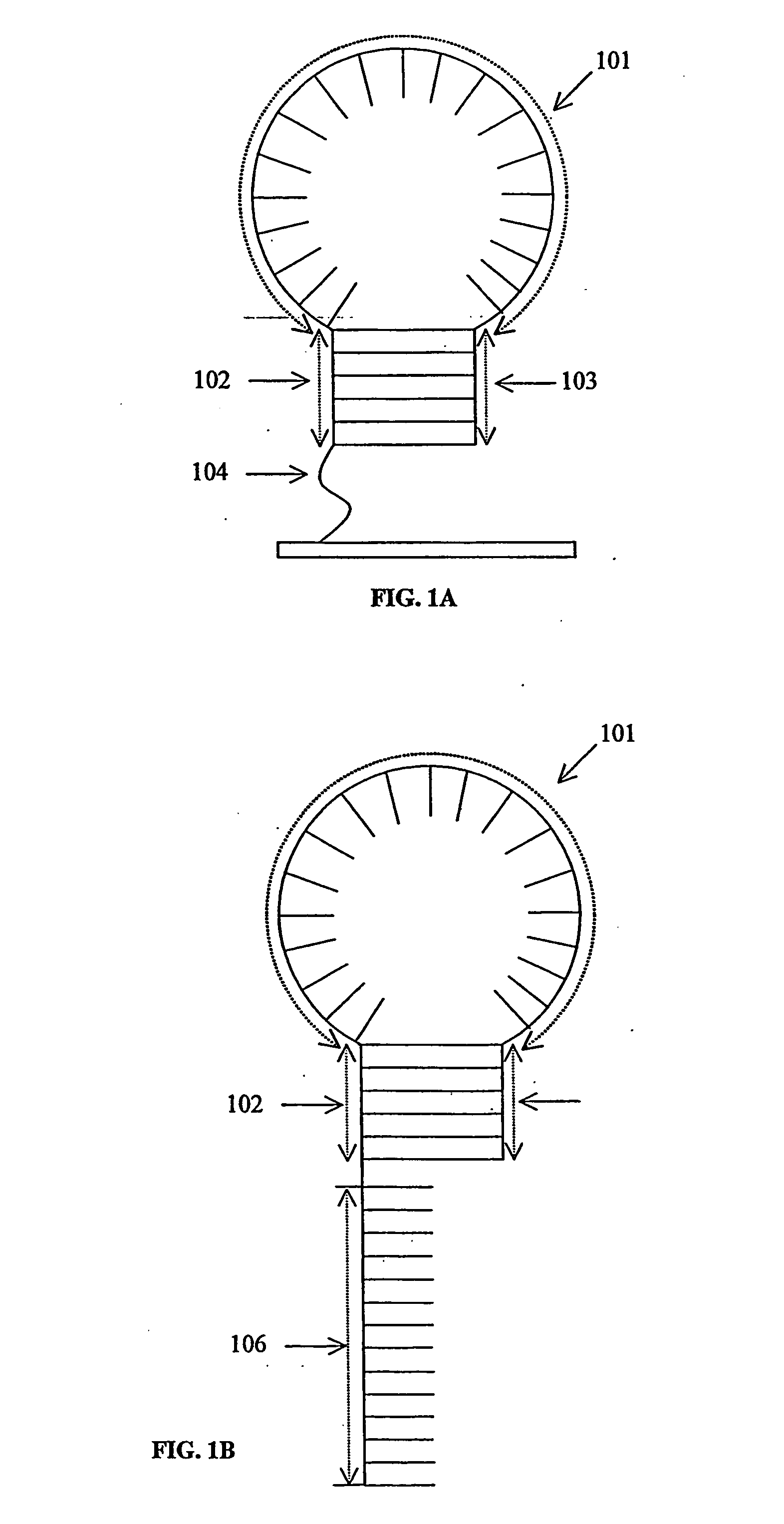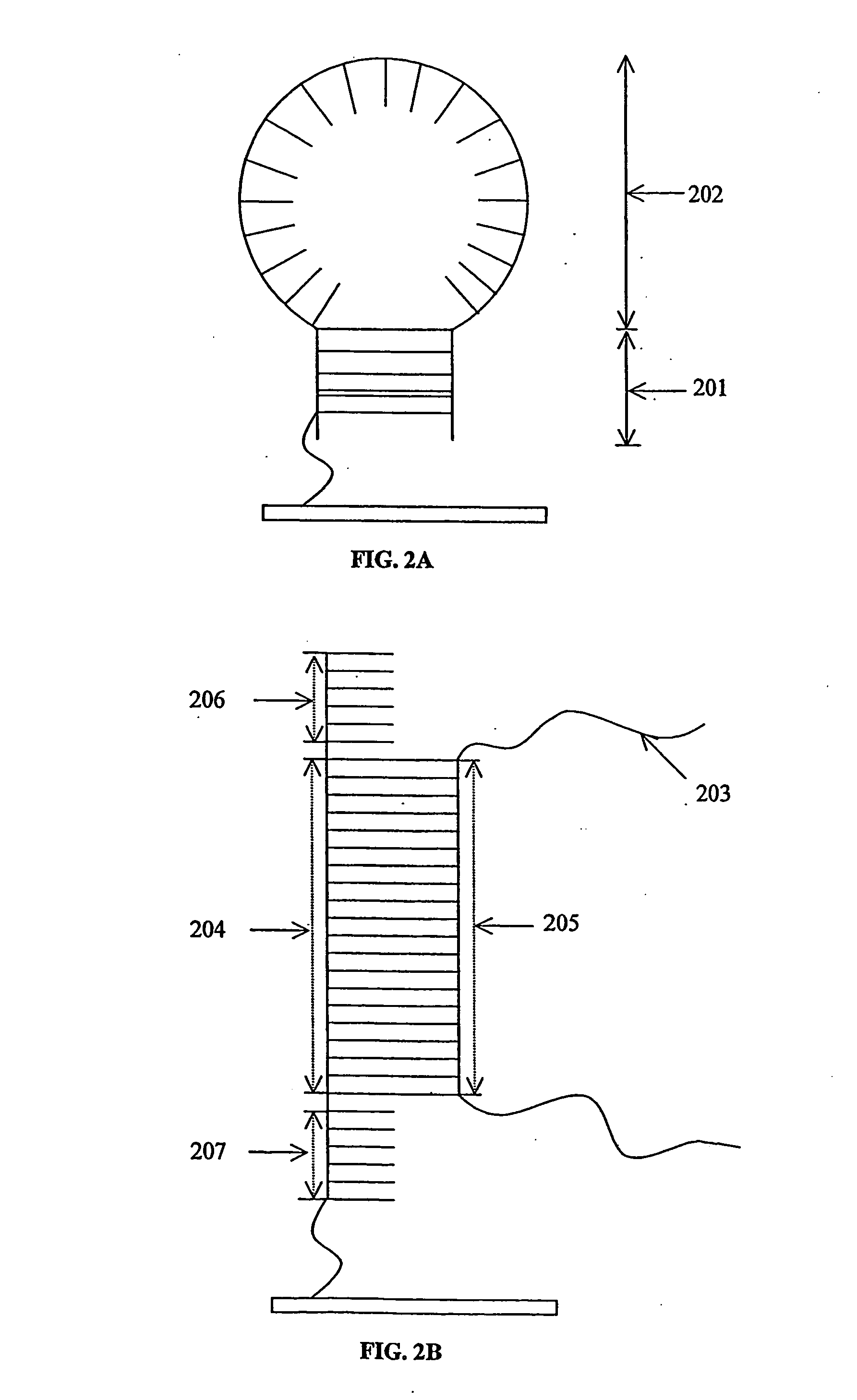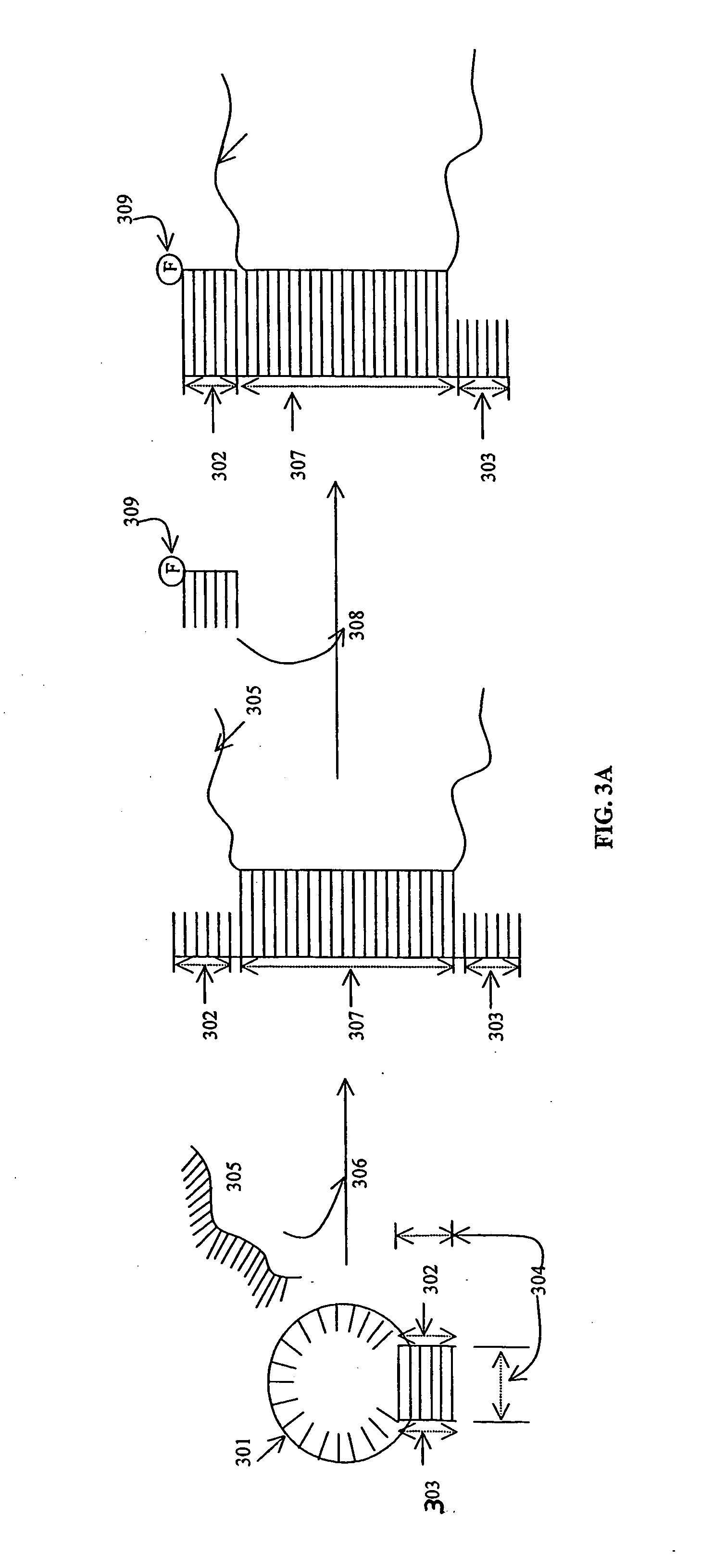Probe biochips and methods for use thereof
a biochip and probe technology, applied in biomass after-treatment, specific use bioreactors/fermenters, organic chemistry, etc., can solve the problems of end-to-end interactions, size and positioning of probes,
- Summary
- Abstract
- Description
- Claims
- Application Information
AI Technical Summary
Benefits of technology
Problems solved by technology
Method used
Image
Examples
examples
Hybridization of Target DNA with Immobilized Hairpin Probes
[0234] The following examples are presented by way of illustration of the present invention, and are not intended to limit the present invention in any way. In particular, the examples presented herein below describe use of hairpin biochips for detection of target sequences.
The Nucleic Acid Molecules
[0235] The codon 137 mutation in the exon 2 of the TCF2 gene is a 75 base pair deletion resulting in a Diabetes Type II phenotype with severe renal dysfunctions (Linder, T. et al. 1999. Hum. Molec. Genet. 8:2001-8). The target sequence used in this example corresponds to positions 266 to 290 of the deleted sequence of codon 137 in the exon 2 of the TCF2 gene. FIG. 7A shows the location of the codon 137 mutation of exon 2. The bold bracketed portion, bases 276 to 350, represents the deleted portion in mutated individuals. FIG. 7B shows the sequence of exon 2 when the mutation occurs.
[0236] The target sequence, Tg2X2C137M1, us...
PUM
| Property | Measurement | Unit |
|---|---|---|
| melting temperature | aaaaa | aaaaa |
| melting temperature | aaaaa | aaaaa |
| melting temperature | aaaaa | aaaaa |
Abstract
Description
Claims
Application Information
 Login to View More
Login to View More - R&D
- Intellectual Property
- Life Sciences
- Materials
- Tech Scout
- Unparalleled Data Quality
- Higher Quality Content
- 60% Fewer Hallucinations
Browse by: Latest US Patents, China's latest patents, Technical Efficacy Thesaurus, Application Domain, Technology Topic, Popular Technical Reports.
© 2025 PatSnap. All rights reserved.Legal|Privacy policy|Modern Slavery Act Transparency Statement|Sitemap|About US| Contact US: help@patsnap.com



